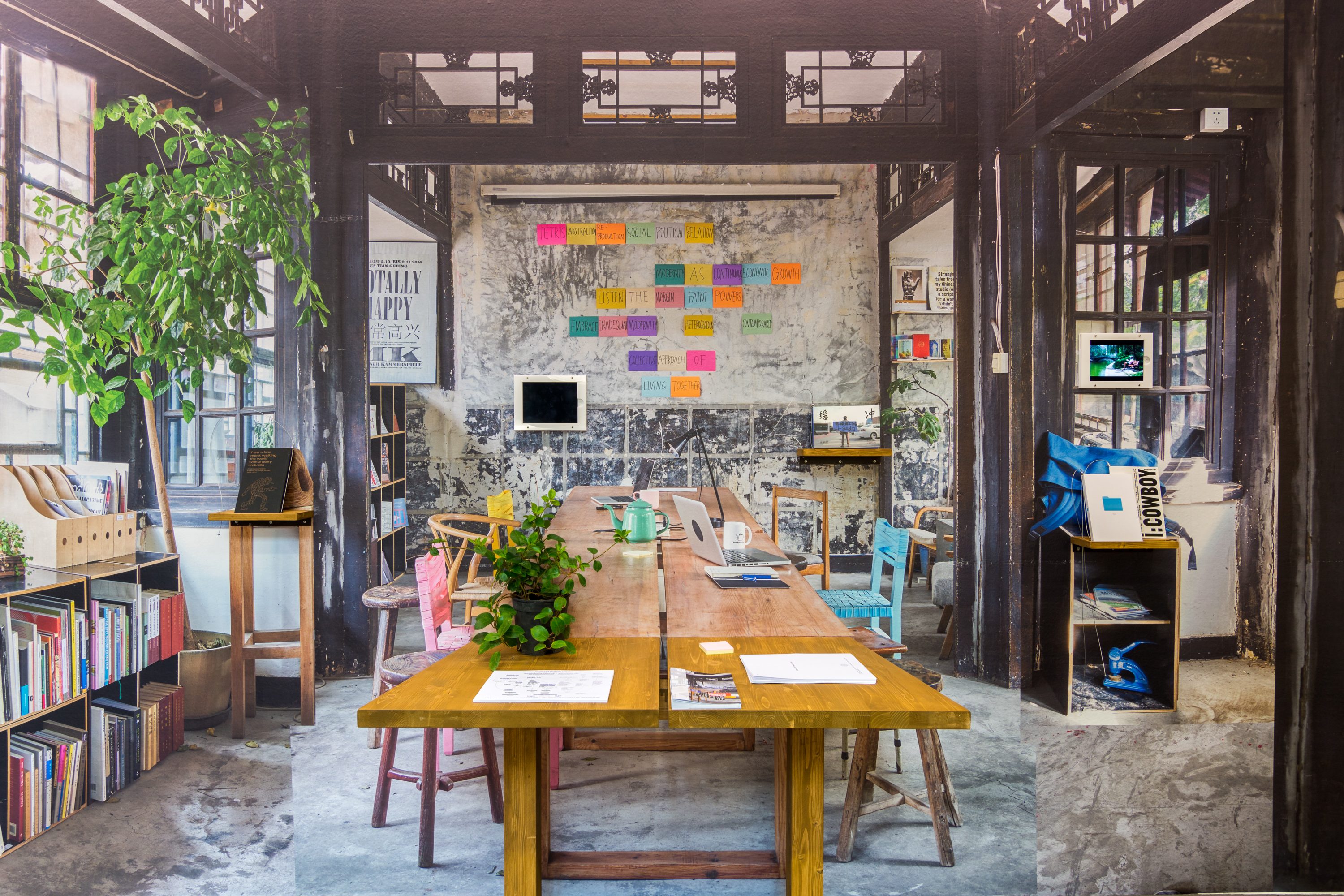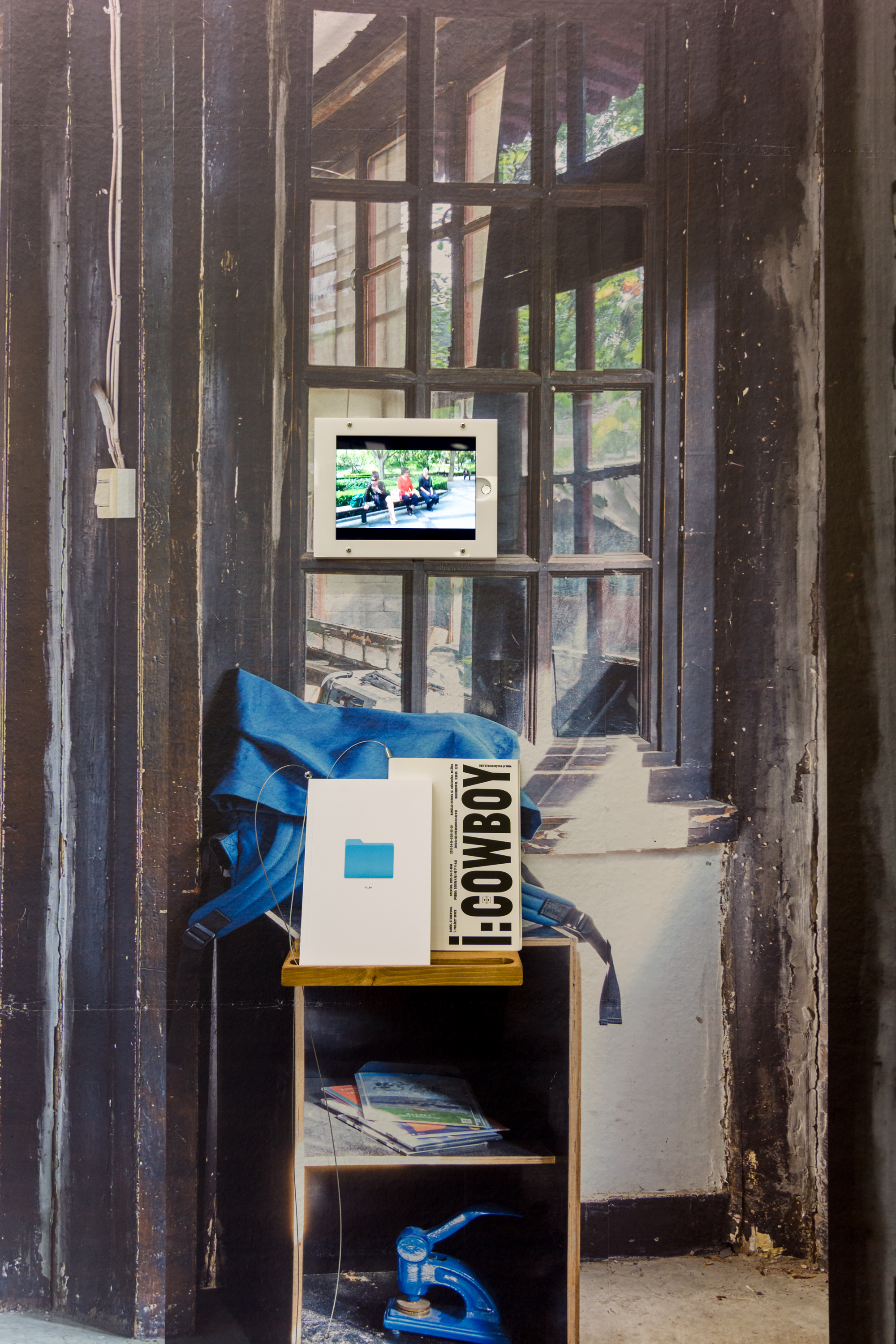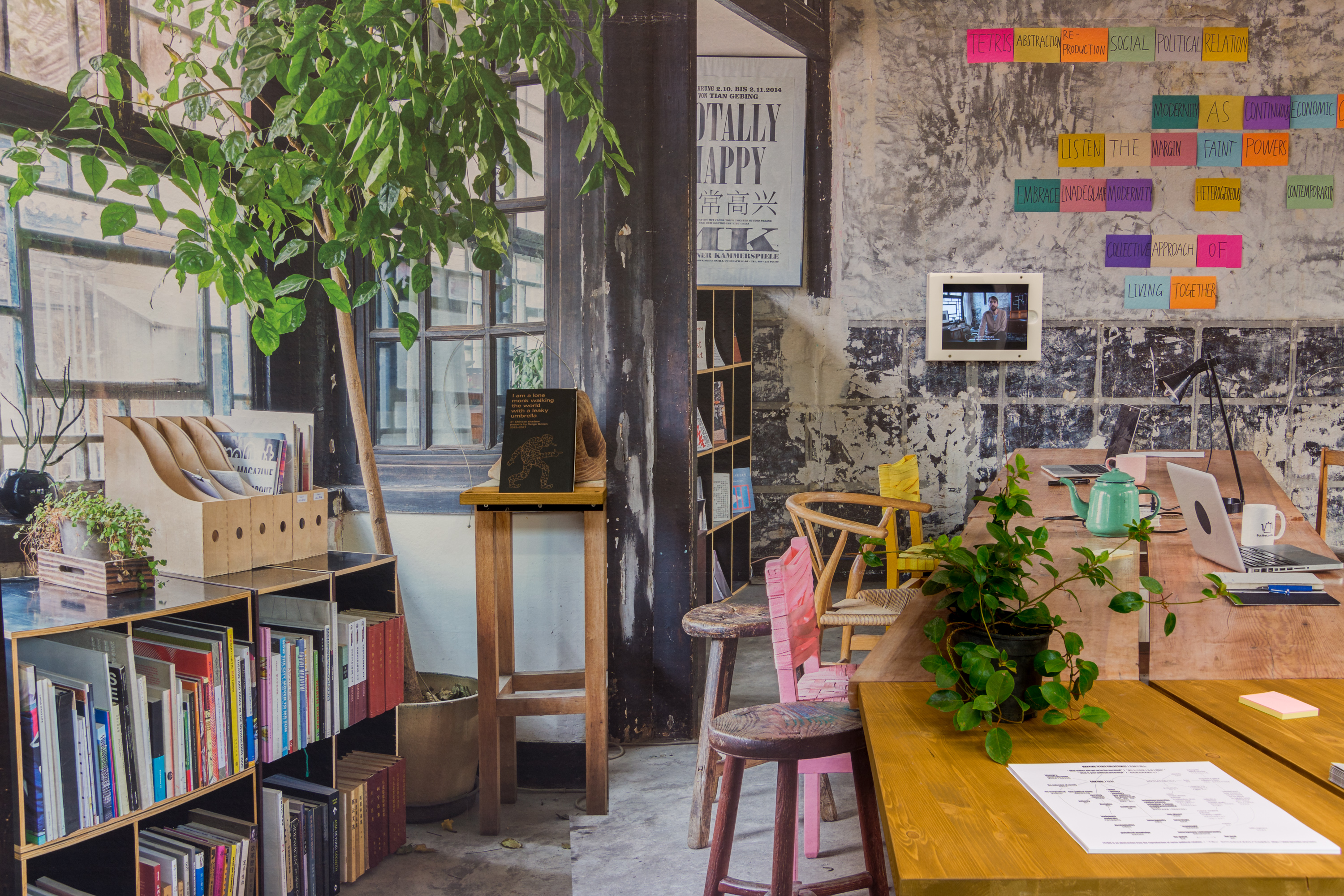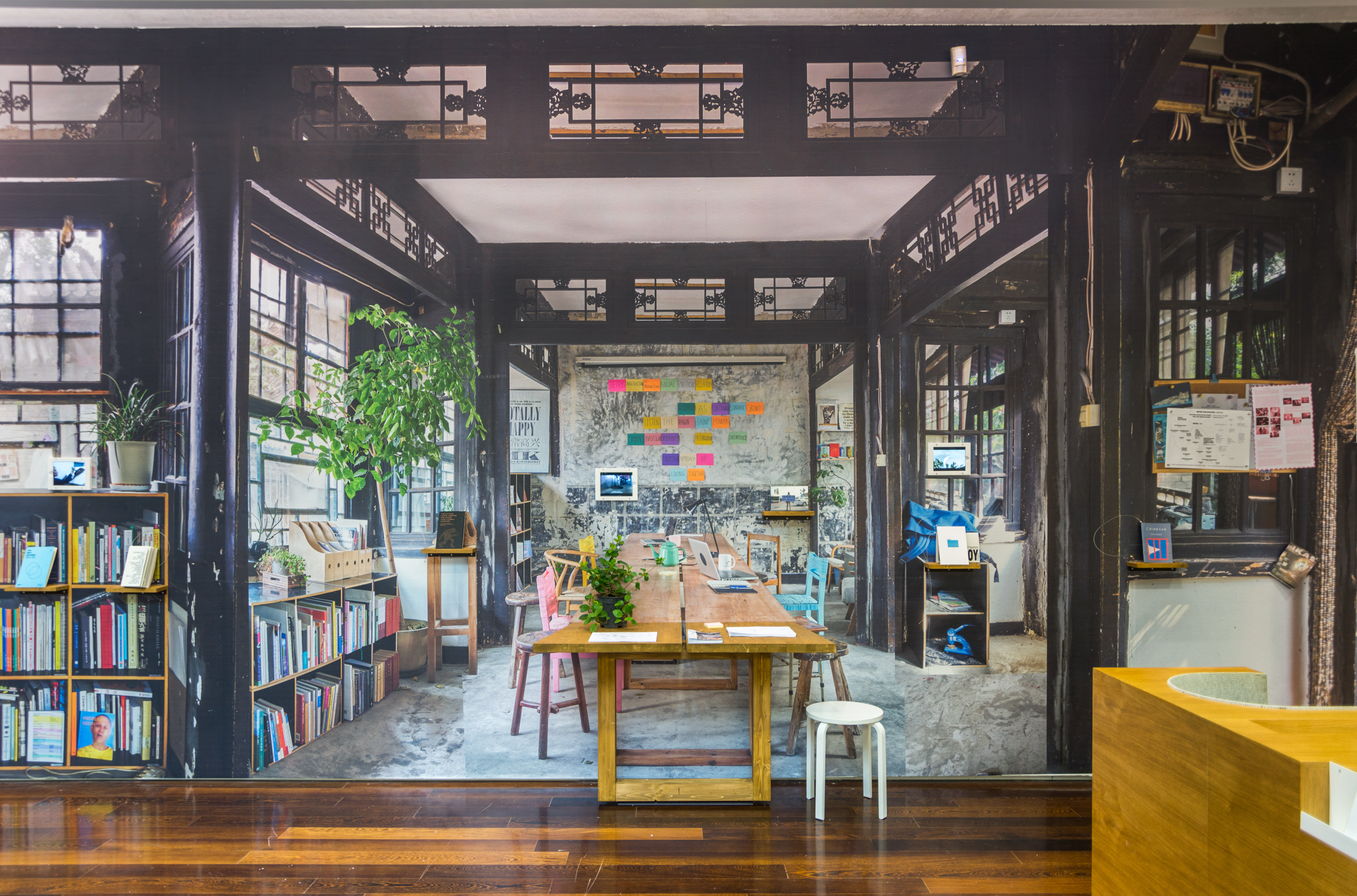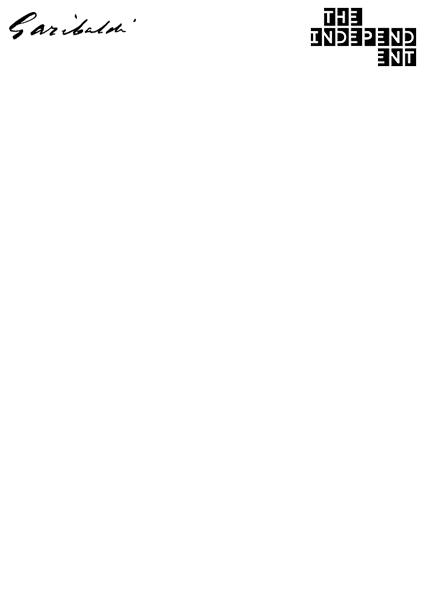
Interview Elena Motisi > Institute for Provocation
Elena Motisi, Institute for Provocation
E. M.: What does the label of “independent” mean for you? Why do you define yourselves in such a way?
IFP: We believe that being independent in the art world is to avoid the influence of market mechanisms in our daily practice. Starting from an interest in the reiterative process of artistic thinking and production, Institute for Provocation was grafted on an existing entity created for the purpose of bringing cultural producers from Europe and China together for mutual exchange. We are dedicated to the dissemination of art and providing a platform of knowledge, for artists to explore their own practice and to be provoked by the very unique context that is Beijing. To be independent is not a goal, nor is it a means to achieve our goals, but a fleeting status with which we can identify. However, we are not independent from governments and policy, as they form the basis of our (fragile) economic framework.
E. M.: How does the concept of independence intersect with the specific field of architectural, curatorial and artistic disciplines? How does it affect the profession and the project? Note: Do the tools (not just economic ones) available to independent architects differ from the tools available to those whose work receives public or private funding?
IFP: If independence can be understood as a state of sovereignty, then IFP is such a state. We and the artists we work with enjoy a lot of freedom, looming under the protective economic shelter of welfare states (albeit not China). It is a refuge where ideas are allowed to be explored, but not without its limitations. As we realize projects, the economic means have to come from different sources, most of them public foundations and governmental agencies. Being independent means perhaps that we are self-organised, that our projects are self-initiated, and we are capable of scaling them based on the size of the economic input. The most important aspect of independence is that the artistic output and criteria is always controlled by ourselves, not by another institution, investor or client.
E. M.: Is it possible to talk about non-profit work in your fields of activity?
IFP: Everything we do is non-profit. However, this does not mean that people do not get paid, the IFP staff get a basic salary. Of course, there is a lot of extra hours spent to ensure that the quality of the output is high. This is a form of investment into the institution, whose main purpose is to be a resource for the artists and producers that can benefit from it. Thus the cultural and artistic profits are always evident, while the economic profits shine with their absence. In the end, liquidity is only a means, not an end.
E. M.: In my opinion, emergencies can be a source of inspiration for new architectural projects. Do today’s independents have to come up with new topics for projects of their own accord, relative to the needs arising from the context in which they live? In this respect, identifying one criticism and one opportunity, is it possible to respond with the processes on which self-initiated projects are based? Under what conditions, then, can a “self-commissioned” project exist?
IFP: Needless to say, to identify an architectural emergency is much easier than finding the appropriate means to deal with it. IFP as an institution is generally more interested in the artistic response and discourse surrounding the role of art in socially complex situations, such as the hutongs in Beijing. Thus, an emergency can be remained unresolved within a self-initiated project, as our role is not to provide solutions, but to identify, highlight and problematize ongoing processes in our surroundings. For example, the Sayizheng project curated by Tianji Zhao, which invites around 20 artists to create site-specific artworks/installations/performances in a pre-defined public space. It is clear that when confronted with a food market or a small public park, artists.
E. M.: With regards to ways of working: what does working with citizens mean to you? What strategies are available for shared work?
IFP: We do not regard our practice as a socially engaged project, although some projects deal with issues surrounding public space and other IFP is located in a living housing community in Beijing. Essentially, we are artists making art: dedicated to artistic production and research, through curatorial and editorial projects. Our public events, exhibitions and still open for a wide range of audience eager to learn more about contemporary art. The strategy is not setting up a boundary between art specialists and those without an artistic background. This how we are able to share and exchange ideas with socialists, anthropologists, philosophers, designers, architects, curators and non-intellectual laborers, and the reason that we can build up our research-based network.
E. M.: Note: Working in “extreme” conditions results in an interruption of a project production process, whilst energies and synergies are redirected in activities relating to new realities. Are these the independents of today?
IFP: Yes.
E. M.: In my opinion, there are some subjects, such as the emergencies related to migrants (possible solutions for receiving them,…), construction waste and its disposal (alternative uses of the unfinished,…), the critical relationship with territory (urban gardens,…) and the generalised political crisis, which may be considered as the starting point for independent collectives’ planning of activities. What is your opinion? Do you think that the solution to these issues can be found in an institutional context or, rather, outside of it?
IFP: All the issues can be the starting point for the independent collectives, if they would like to. How the independent collectives would persist in developing their project, depends more on how the practitioner put their updated thoughts and existing experiences in the current status. Institutionalization and anti-institutionalization, are not separable or separate activities, but different moments of one political process; one does not exist without the other. We could not hold the two notions as abstraction, but develop the dialectic of institutionalization and anti-institutionalization under the influence of practice in social reality.
E. M.: How much does politics affect your job? Does political pressure represent an incentive or a barrier for independent architects?
IFP: The greatest impact of China’s current political situation is that the officials and public servants are indoctrinated to establish “order” and “clean up” to the country, through the latest campaign launched by the central committee, i e Xi Jinping. There will be no let-up in this operation. Anything heterodox seems to be marginalized. However, as Socrates once said, “I know that I know nothing.” We would like IFP is a place that opposite and opposing forces will find the necessary balance for perpetual interplay.
E. M.: Do you think there is a connection between those territories characterised by conflict and the presence of independent groups? Can we say that the intensity of the presence of these collectives and of their actions tends to superimpose itself on maps of emergencies and geopolitical imbalances? Is there a relationship between the conditions of conflict in which they work and the way in which architectural planning paradigms change?
IFP: Definitely.
E. M.: Talking about strategies, do an unambiguous and independent way of planning, or some guidelines that can act as a tool for a new kind of intervention in line with the needs of the contemporary, exist?
IFP: There is no fixed way of planning we would say. We try to be flexible, collaborative and mobile. Being independent today, in the sense of art, means you have to be a part of the system that you act and balance with the hegemonic knowledge, and meanwhile made an “exit” of the established system. We wouldn’t call being independent is being distanced from the system or try to against it, therefore, “exit” is an active, subjective, “deviant” demand in terms of both physical and mental conditions.
E. M.: Which of your projects has represented an effective action within the field of the topics you investigate?
IFP: If we refuse to acknowledge established truths, and common sense, what remains? And how can we take that surplus and reform it into a new epistemology?
Way back at the “Tetris initiative”, IFP attempted to break free from established ways of knowing by calling into question and bringing a halt to dualism, so that the future might progress towards multimodality. But when this negation reached its apex, they found themselves sucked into the mental vortex of wondering whether or not their tactics were not themselves, yet another even more effective form of dualism — the lucidness of their awareness allowing them to recognize the lag between language and expression (the forms of language expression already grasped cannot but exist within established experience), pulling them into the awkward paradox of their performative practice.
E. M.: Working in “crisis” areas results in changes to the timescales for design projects: have you found that there is any relationship between the acceleration of such timescales and the innovativeness of the results?
IFP: Sometimes, and sometimes not.
E. M.: Could you briefly describe your projects??
IFP: IFP’s practice unfolded with two lines – collaborating with our residence artists and institutional research project. This year we launched a long term research-based and curatorial project named “TETRIS”, which we hope will generate inter-provocative networks and working methodologies via cooperation and joint action between curators, artists, researchers, scholars and IFP’s artists-in-residence. From the point of view of an institutional practice, IFP will develop research projects on different subjects, in the form of writing, curating, publishing and symposiums; on the other hand, IFP initiatively exchanges these projects with its residence artists and curators, regarding the crossings and impacts as possibilities of co-structuring our networks. The lectures, discussions, and exhibitions of related documents, images and objects will mainly be presented at IFP and in our project space Black Sesame Space, however, the projects are also geographically in a condition of uninterrupted extension and fluidity.
E. M.: In the specific case of Beijing, “architecture” is trapped between by an architectural reality borne out of macro-urbanisation and the tracks of the past. Which one are the instruments to deal with this situation?
IFP: Each artist and architect will find their own instrument of use in the confrontation with the realities of Beijing. However, we have identified some practices which try to deal with these very difficult typologies. On the one hand there are those who operate with extreme sensitivity to the contextual framework and historical layers of the city, town, landscape etc, creating tiny jewels of space and materiality. On the other hand, there are those who build with a social mind, bringing playful and pragmatic propositions while restraining their own need for architectural gestures and fancy details. The most inventive solutions tend to come from the latter, and very often the architects are just one part of a bigger community whose goal is to construct socially and economically functional structure, capable of absorbing changing behaviours and needs.
E. M.: What does it mean to be architects, designers and artists in today’s Beijing?
IFP: Living with the entanglement consisting of fantasy, reality, and necessity, which we would call the problem awareness of an artist.
E.M.: Are the themes you deal with in your work related to those urgent issues which are inherent in your country and in the territories in which you operate?
IFP: Yes, our institutional practice is closely related to the local socio-political circumstances. This is how we characterize ourselves and get inspired, we see these issues are ground and necessity of having an independent space. But in another way, we also need to be aware that these local issues can be transmitted into the global discourse on art and society.
E. M.: Your group works also in other countries. Was this a choice? What are the reasons behind this?
IFP: Today, artists and curators are expected to be mobile, bringing their practices with them to distant places for cross-fertilisation. Sometimes this is out of necessity, for curiosity or for personal reasons. The principle founders of the Institute for Provocation come from China, Belgium and Sweden, and the institution has been supported by these countries as well as the Netherlands, Denmark, France, Switzerland and Australia. In addition, we have hosted artists from Japan, Israel, Germany, Spain, Italy, Romania and Serbia. As the network of IFP grows and more people join, it is inevitable that our practice also extends beyond the borders of one country. We have the ambition of making IFP a networked platform that can operate simultaneously in China, Sweden and other places, applying the same cross-disciplinary, research-oriented artistic and architectural practices wherever we go, whatever the reason.


